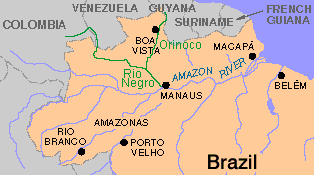

Common Name: Cardinal Tetra
Scientific Name: Cheirodon/Paracheirodon axelrodi
Pronounced: Ki'-ro-don
Categories: Genus of Characidae, Sub-family
Cheirodontinae
Origins: South America, in the tributaries of the Orinoco and Rio
Negro.

Description: Grows to 1.6-1.8in (4-4.5cm). The females is the larger
of the two. The body is elongated and laterally compressed, and there is
a adipose fin (2nd dorsal). It is easily identified by it's coloration. Their
base color is silver with a blue or green sheen. There is a broad blue-green
band that runs from the tip of the nose threw the eye to the base of the
caudal fin. Underneath this band is a bright red band that runs the length
of the body from the caudal fin all the way to the eye. This band is the
easiest way to tell the difference between the Cardinal and Neon Tetras.
The belly is white. The fins have are colorless and the back is greenish
in color. They are peaceful, and active swimmers.
Diet: Omnivorous. Worms, small crustaceans, dried food.
Environment: It mostly lives in shoals, in the middle depths, flowing
and still waters or in dense plant growth. Water temperature should be 73-79F
(23-26C), soft (2-3 dH), and slightly acid (5-6.8 pH). Use a dark tank bed.
Tank Mates: Community tank. Schools of at least 7; schools of 15-20
fish is even better.
Breeding: Difficult to breed. Spawning usually takes place at night
or in subdued light. Leave a 25 watt light on at night in a corner of the
room. When conditioning them, separate them and feed freeze-dried foods,
such as brine shrimp and tubifex worms. The female will become full bodied
when ready. The tank should have a capacity of 5-10 gallons and lightly aerated.
The water should be acid, very soft (1 dH), treated with 2 level teaspoons
of salt per gallon (to prevent bacterial growth), and at a temperature of
about 74F. The water depth should be about 4-5 inches deep. The bottom of
the tank should be covered in peat moss to protect the eggs. Pair the two
at night and only let soft light be allowed the following day. The act of
spawning is hard to spot. The pair will assume a side-to-side position and
300-500 translucent, pale brown adhesive eggs will be scattered throughout
the tank. The eggs will hatch in 24-48 hours and then increase the light
slowly. The fry should be free swimming in 3-5 days. Feed the fry infusoria
for at least a week then start them on newly hatched brine shrimp and rotifers.